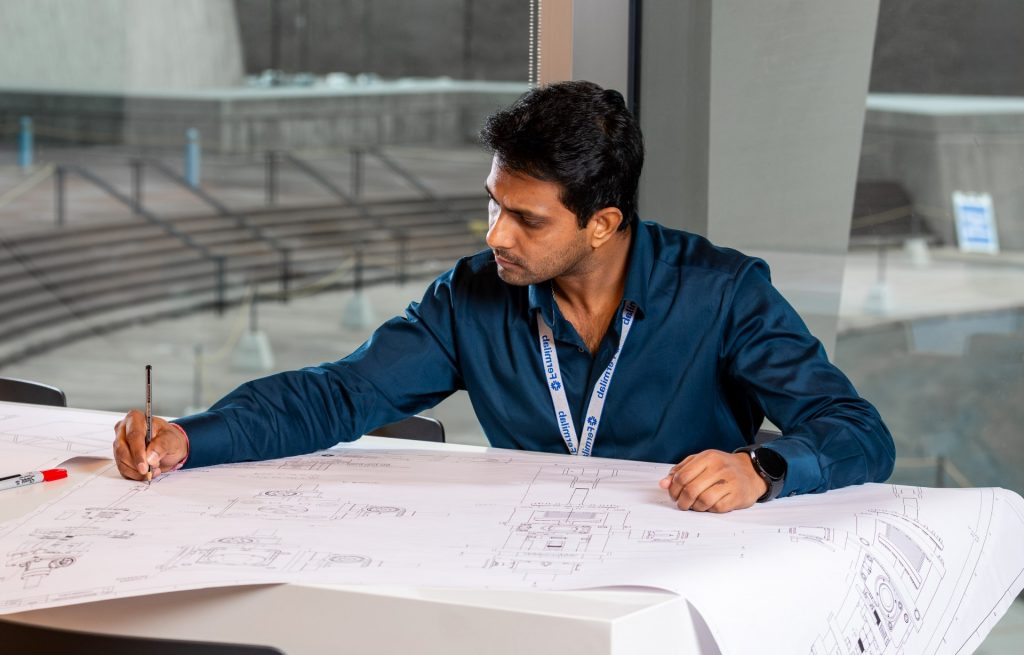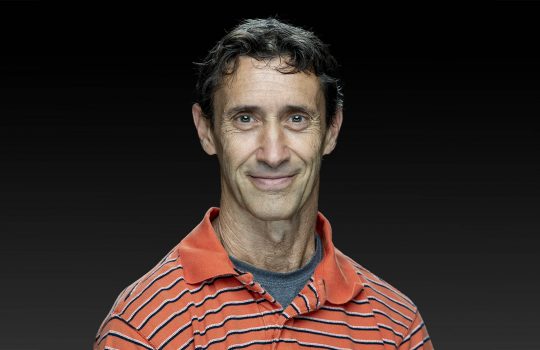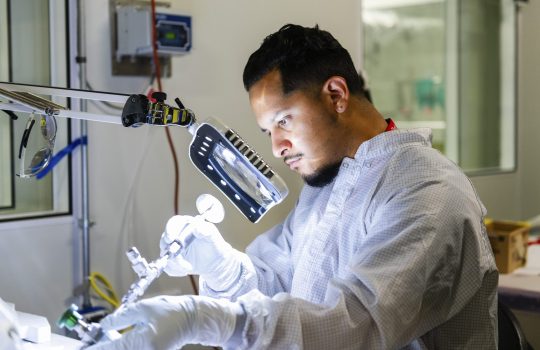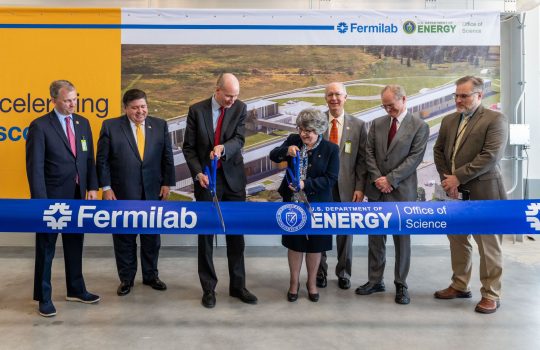Shishir Shetty grew up in India and studied aeronautical engineering. In 2013, he came to the United States for his Master’s degree. Originally working on projects related to aircraft structures in school, Shetty became interested in Fermilab due to his interest in building structures from scratch and the exceptional engineering environment at the lab
This year, Shetty is organizing activities for Engineers Week at Fermilab as the co-chair of the laboratory’s Engineering Advisory Council.
“The ecosystem we have is unique,” said Shetty, who joined Fermilab in 2017. He appreciates that Fermilab brings together people of all ages, nationalities and genders and provides guidance that empowers them to solve problems in ways they think would work best and be most efficient. “You get to make tangible impact in the whole life cycle of a project.”
At Fermilab, the level of detail of engineering needed to go into the tasks that engineers pursue is high. Describing it as “engineering refinement at its best,” Shetty explained how such high-precision engineering cannot have any wiggle room in the variables. The deliverables of a project are often subject to extreme requirements. “The conditions are extraordinary,” he said.

Fermilab engineer Shishir Shetty is co-chair of the laboratory’s Engineering Advisory Council. Photo: Dan Svoboda, Fermilab
A favorite design project that Shetty worked on was the transport system for a delicate neutrino detection system built for the Short-Baseline Near Detector at Fermilab. The move was very complex because the transport had many limiting conditions: There could be no significant vibration, no moisture seeping into the detection system. No dust and no light were allowed to enter. And the engineers had to account for the detector’s high center of gravity. The team designed a special transport frame and—very slowly—moved the detector on a trailer from the assembly facility to the research facility. “To put it together was an almost insurmountable task,” he said.
When Shetty was first applying to work at Fermilab, one thing that stood out to him was how at Fermilab the engineers were building many unique structures from scratch. This process involved conceiving the project, looking for the whole life cycle of a project from engineering analysis to fabrication and testing, and then delivering it. He also appreciates the culture at Fermilab: he thinks people working here have a mission in mind and are motivated for science; the problems they are solving are rigorous. “It’s extremely challenging. The challenges that you get, and the ways you solve them, and the aptitude of the people around you are mind boggling.”
Mayling Wong-Squires is Fermilab’s chief engineer and head of the Mechanical Support Department in the Accelerator Directorate. She has worked at Fermilab for over 25 years.
“Engineers at Fermilab work on a wide breadth and depth of technical work, such as maintaining the operations of particle accelerators and experiments, laying groundwork research in artificial intelligence, quantum and microelectronics, designing future accelerators and experiments, and maintaining the infrastructure of the lab,” said Wong-Squires. “For many projects, Fermilab engineers cannot just go out and buy equipment from the local hardware store.” Instead, they either ask vendors to push the limits of their technology or they outright design it themselves.
“That’s what makes working at Fermilab challenging and fun,” Wong-Squires said. “It requires engineers to return to textbooks from college. If they don’t find what they’re looking for, they innovate, and then they might end up writing the future textbook. It’s what we’re proud of here.”
Engineers Week
Engineers Week, founded by the National Society of Professional Engineers in 1951, is a weeklong event that takes place yearly every February. At Fermilab, the week serves as a time for engineers to convene and attend various activities and presentations.
Among the events offered for employees, users and contractors this year will be a plenary session with three divisions. One will bring together engineers from many disciplines to talk about the accomplishments of the past year; another will commemorate Helen Edwards, who was a lead figure in the design of the Tevatron at Fermilab; the third will feature keynote speaker Dr. Asmeret Asefaw Berhe, director of the Department of Energy’s Office of Science. Fermilab’s Integrated Engineering Research Center will feature posters and engineering exhibitions from both Fermilab and external groups.
Other events include a hackathon, which will provide creative, innovative time for engineers to work on a project of their own choosing. There will also be tours of underground and experimental areas at Fermilab intended for engineers who joined the laboratory in recent years.
“Engineering is all about observing things around us,” Shetty said. He went on to explain that, for him, engineering cannot be isolated to simply assignments done in the workplace. “It goes beyond,” Shetty said. “It is a part of your life, your observation of things, how they work, how they come together.”
Fermi National Accelerator Laboratory is supported by the Office of Science of the U.S. Department of Energy. The Office of Science is the single largest supporter of basic research in the physical sciences in the United States and is working to address some of the most pressing challenges of our time. For more information, please visit science.energy.gov.



